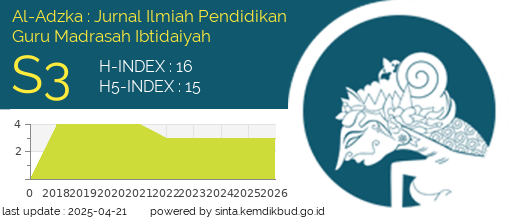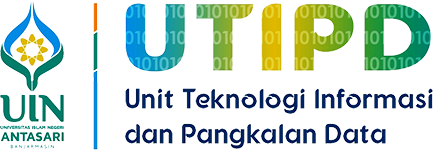Parents and Students' Response to Distance Learning (Google Classroom)
DOI:
https://doi.org/10.18592/aladzkapgmi.v11i1.4174Abstract
This study aims to determine the response of parents and primary students to distance learning based on google classroom during the Covid-19 pandemic. The method used in this study is a qualitative method with data collection in the form of interviews, documentation, and observation. The results showed that both students and their parents objected to using google classroom as a learning media for distance learning activities. According to their explanation, the use of Google Classroom requires strong network access to open or send assignments, besides that data packets also run out quickly due to the use of this distance learning application. For students and parents who have difficulty, an alternative to overcome this is to send assignments via WhatsApp to the teacher concerned.References
Azwar, S. (2001). Metode Penelitian. Yogyakarta: Pustaka Pelajar.
Indrajit, Richardus Eko. (2016). E-Learning dan Sitem Informasi Pendidikan; Modul Pembelajaran Berbasis Standar Kompetensi dan Kualifikasi Kerja Edisi 2. Yogyakarta: Preinexus.
Nurdyansyah, & Fahyuni, E. F. (2016). Inovasi Model Pembelajaran Sesuai Kurikulum 2013. Sidoarjo: Nizamia Learning Center.
Kemendikbud. (2020a). Jika Satuan Pendidikan Sudah Memenuhi Semua Daftar Periksa Dan Siap Melakukan Pembelajaran Tatap Muka.
Kemendikbud. (2020b). Surat Edaran Jendral No. 15 Tahun 2020. 09, 1–12.
Kemenkes RI. (2020). Pedoman Pencegahan dan Pengendalian Coronavirus Disease (COVID-19). Germas, 0–115.
Mendikbud. (2020). C. d. 0.0075 300. 300.
Nasional, S. P. (2003). Introduction and Aim of the Study. Acta Pædiatrica, 71, 6–6. https://doi.org/10.1111/j.1651-2227.1982.tb08455.x
Permata, A., & Bhakti, Y. B. (2020). Keefektifan Virtual Class dengan Google Classroom dalam Pembelajaran Fisika Dimasa Pandemi Covid-19. JIPFRI (Jurnal Inovasi Pendidikan Fisika Dan Riset Ilmiah), 4(1), 27–33.
Purwanto, A., Pramono, R., Asbari, M., Budi Santoso, P., Mayesti Wijayanti, L., Chi Hyun, C., & Setyowati Putri, R. (2020). Universitas muhammadiyah enrekang. 2, 1–12.
Putri, G. K., Ani, Y., & Dewi, S. (2019). Pengaruh Model Pembelajaran Jarak Jauh Berbasis Google Classroom Effect Of Google Classroom-Based Distance Learning Model. Al-Fikrah, 2(1), 60–79.
Sukmawati;, & Nensia. (2019). The Role of Google Classroom in ELT. International Journal for Educational and Vocational Studies, 1(2), 142–145.
Warsita, B. (2014). THE PATTERNS OF LEARNING ACTIVITIES IN DISTANCE. 73–83.
Wicaksono, V. D., & Rachmadyanti, P. (2016). Pembelajaran Blended Learning melalui Google Classroom di Sekolah Dasar. Seminar Nasional Pendidikan PGSD UMS & HDPGSDI Wilayah Timur, 513–521.
Google. (2020). About Classroom. Retrieved 12 02, 2020, from https://support.google.com/edu/classroom/answer/6376881?hl=en
Satgas Penanganan COVID-19. (n.d.). Retrieved November 20, 2020, from https://covid19.go.id/
WHO. (2020). World Health Organization. Retrieved from https://www.who.int/health-topics/coronavirus#tab=tab_1
Downloads
Published
How to Cite
Issue
Section
License
Authors who publish with this journal agree to the following terms:
- Authors retain copyright and grant the journal right of first publication with the work simultaneously licensed under a Creative Commons Attribution 4.0 International that allows others to share the work with an acknowledgement of the work's authorship and initial publication in this journal.
- Authors are able to enter into separate, additional contractual arrangements for the non-exclusive distribution of the journal's published version of the work (e.g., post it to an institutional repository or publish it in a book), with an acknowledgement of its initial publication in this journal.
- Authors are permitted and encouraged to post their work online (e.g., in institutional repositories or on their website) prior to and during the submission process, as it can lead to productive exchanges, as well as earlier and greater citation of published work.












